OMRON provides General-purpose Relays, I/O Relays, Power Relays, Latching Relays, and Ratchet Relays.
To get an idea of what relays are, think of a children's athletic carnival.

Little A holds on tightly to the baton and passes it to the Big B. This is a relay.
Now lets look at a more technical example. Think of turning on a television with a remote control.
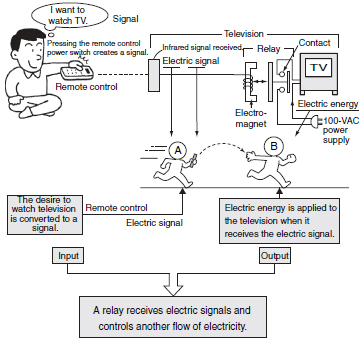
A relay consists of an electromagnet that receives an electric signal and converts it to a mechanical action and a switch that open and closes the electric circuit.

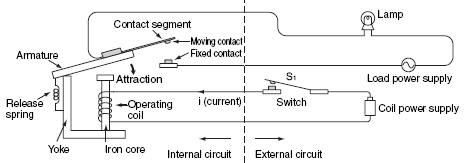
In this example, we will turn ON a lamp using switch S1 and a relay.
1. Press S1 to turn it ON.
2. Current i flows to the operating coil and magnetizes the core.
3. The armature is drawn to the core by the electromagnetic force.
4. When the armature reaches the core, the moving and fixed contacts make contact and the lamp lights.
5. When S1 is released to turn it OFF, current no longer flows to the operating coil, the electromagnetic force no longer exists, and the armature returns to its original position by the force of the release spring.
6. When the armature has returned to its original state, the contacts become separated and the lamp turns OFF.
Relays are used in most machines and devices that use electricity.
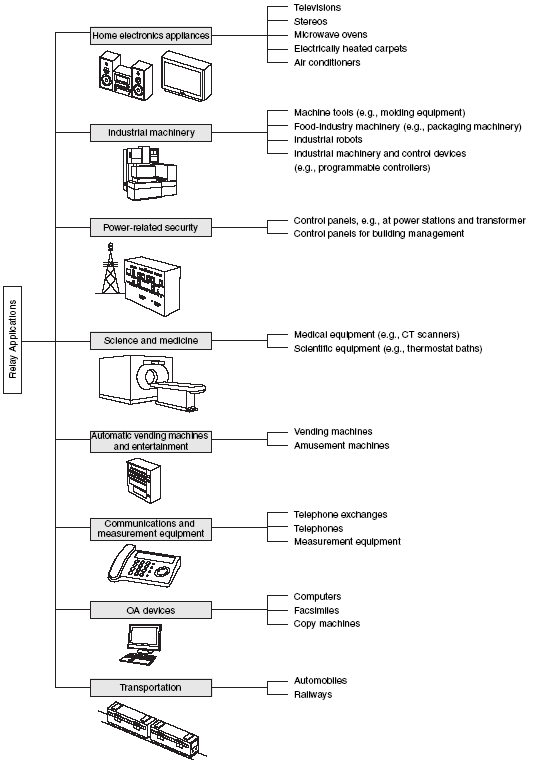
There are different ways to classify relays. The following groupings will be used in this technical guide.
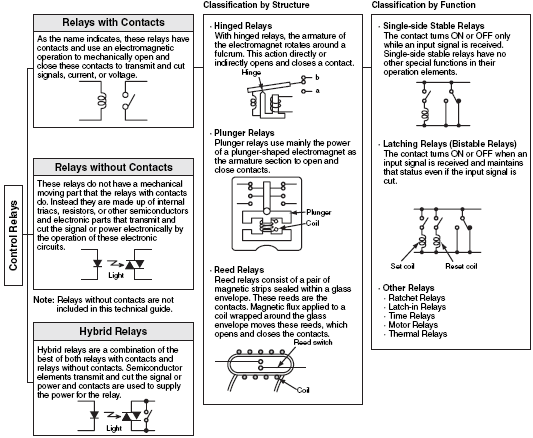
Relays are classified into the following types, depending on whether or not they have a permanent magnet.
Non-polarized relays do not use a permanent magnet in their electromagnetic section.
This means that generally the operating coils do not have polarity. There are some non-polarized relays, such as those with built-in operation indicators, or surge-absorbing diodes, whose operating coils have polarity.
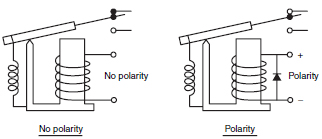
Polarized relays use the magnetic flux of the permanent magnet in their electromagnetic sections. This means that the operating coil has polarity.
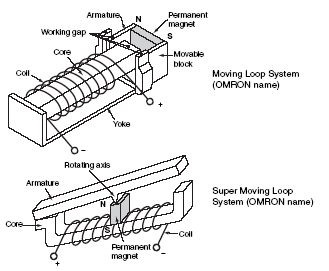
Battery Not Connected to the Coil
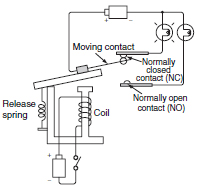
No current is applied to the operating coil, so the electromagnet does not operate. The armature is pulled by the force of the release spring in the counterclockwise direction and, as a result, the moving contact makes contact with the normally closed contact (turns ON) and the normally open contact stays disconnected from the moving contact (remains OFF).
Battery Connected to the Coil
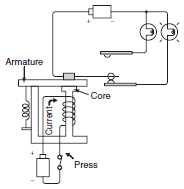
When current flows to the operating coil the electromagnet is magnetized and the armature is drawn to the core. As a result, the moving contact moves away from (turns OFF) the normally closed (NC) contact and connects (turns ON) the normally open (NO) contact.
Magnetic Latching Relays: Two-coil Latching Relays
Battery Not Connected to Coil
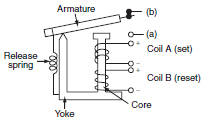
The diagram shows the relay in the relaxed state.
Latching relays are the same as the single-side stable relays described previously except that the core, yoke, and armature aremade from semi-hard magnetic material and there are at least two coils in the relay.

When current flows through coil A, the electromagnet (made of semihard material) is magnetized and the armature is attracted to the core.
As a result, the moving contact moves away from the normally closed (NC) contact (turns OFF) and makes contact (turns ON) with the normally open (NO) contact.
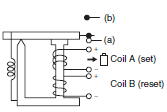
In the set state, the residual magnetic flux in the semi-hard magnetic material (material that has properties similar to a permanent magnet) will keep the armature attracted to the core even if a current is no longer applied to coil A.
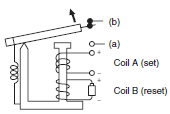
If a current is applied to coil B, which is wound in the opposite direction to coil A, the residual magnetic flux in the semi-hard magnetic material will reduce and the magnetic attraction will weaken. The power of the release spring will become stronger than the magnetic attraction, so the armature will release and the relay will be in a relaxed state.
When the armature has released, there will be almost no residual magnetic flux in the semi-hard magnetic material.
Note: In contrast to the hard magnetic material used in a permanent magnet, semi-hard magnetic material requires less energy to magnetize and de-magnetize.